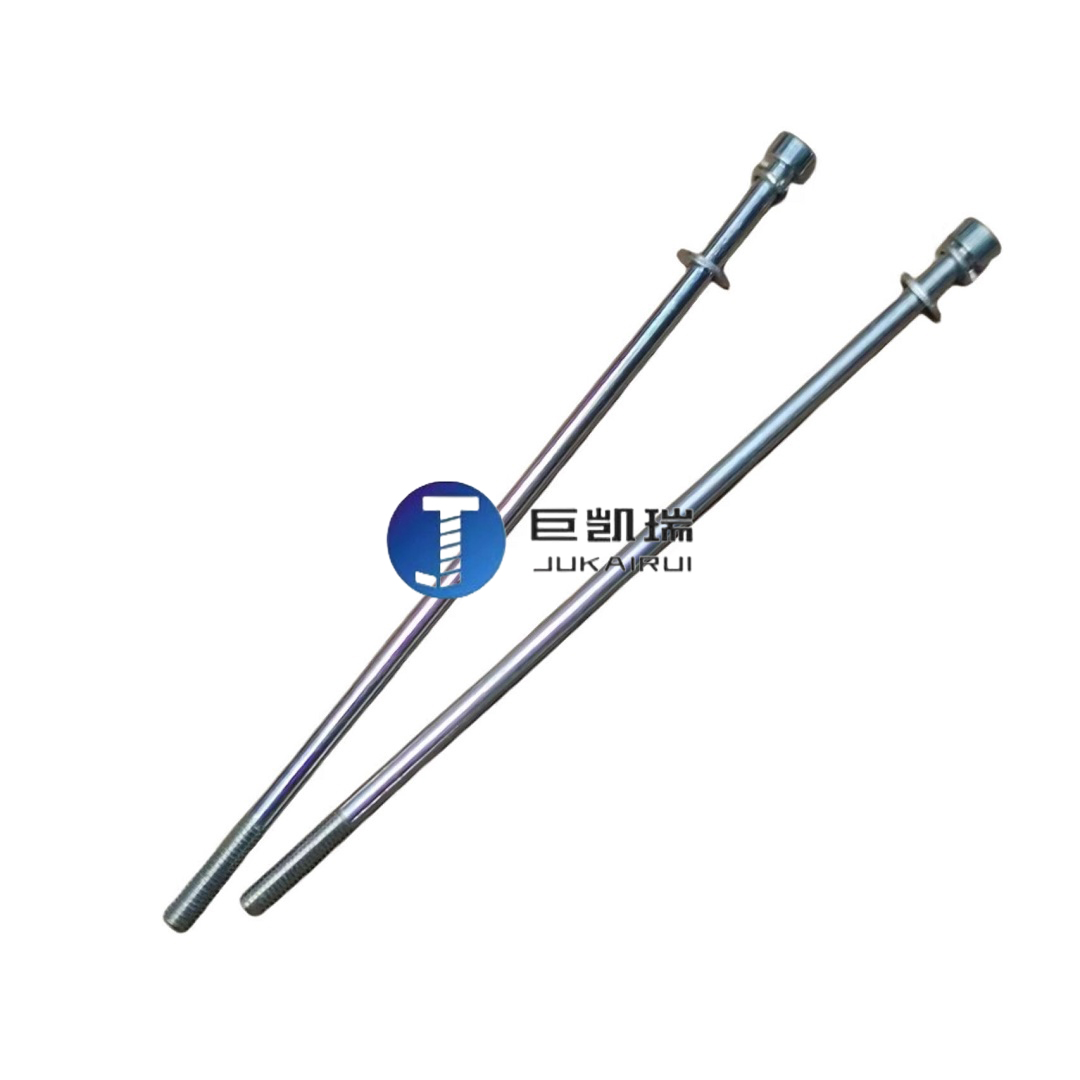Release time:2020-01-16 18:44 Browse:

In the field of fastener manufacturing, the processing technology of long screws is crucial, in which hot punching and cold heading as two main forming methods, each has unique characteristics and advantages, suitable for different application environments. In this paper, the differences, characteristics and advantages and disadvantages of these two processes in different scenarios will be analyzed in detail.
Characteristics and advantages of hot screws
Features:
1. High temperature treatment: Hot screw is a process of pressure fusion by heating the screw cover and screw to a certain temperature. This high temperature environment enhances the plasticity and fluidity of the metal material, which is conducive to the formation of a strong connection.
2. Material fusion: under heating conditions, the material of the screw cover and screw can be better integrated to form a high-strength threaded connection.
3. Good corrosion resistance: During high temperature treatment, a layer of oxide film will be generated on the surface of the screw, which can effectively resist the erosion of the corrosive medium and extend the service life of the screw.
4. Wide range of application: The hot beating process is suitable for a variety of metal materials, especially for steel that is easy to oxidize and embrittlement, which can effectively improve its overall performance.
Advantages:
1. Strong connection: Because the material is fused at high temperature, the threaded connection of the hot play screw has extremely high strength and carrying capacity, which is suitable for occasions that need to withstand high stress.
2. Good shock resistance: in strong earthquake environment, the connection of hot screws can still remain firm, effectively prevent loosening and breakage.
3. Strong corrosion resistance: The existence of surface oxide film makes hot screws maintain good corrosion resistance in harsh environments.
4. Wide range of applications: hot screw is widely used in the manufacture of vehicles such as automobiles, aviation, ships, trains, as well as the connection of large machinery and equipment and building structures.
Features and advantages of cold heading screws
Features:
1. Cold processing molding: cold heading screws are fused with the screw cover and screw material by cold processing at room temperature. This method does not require heating, reducing energy consumption and oxidation problems.
2. Save raw materials: cold heading molding uses the plastic deformation of metal to produce parts of the required shape, which can significantly improve the utilization rate of materials, generally up to more than 80%.
3. High production efficiency: compared with cutting processing, cold heading molding process can greatly improve production efficiency, so that the productivity of screw fasteners is increased several times or even hundreds of times.
4. Improve mechanical properties: During the cold heading process, the cold working hardening of the metal and the reasonable fiber streamline distribution formed inside make the strength and fatigue strength of the parts much higher than that of the raw materials.
Advantages:
1. Low cost: Due to saving raw materials and improving production efficiency, the production cost of cold heading screws is relatively low.
2. High surface finish: cold heading molding process makes the surface finish of the final part better, reducing the subsequent processing process.
3. Wide applicability: cold heading screws are widely used in home furnaces, machinery manufacturing, production lines and other fields, especially for occasions that do not require special high strength and high corrosion resistance.
4. Environmental protection and energy saving: the cold heading process does not require heating, reducing energy consumption and environmental pollution.
Application environment analysis
Applicable environment for hot screws:
High strength requirements: Key components such as automotive engines and shock absorbers need to withstand greater stress and vibration.
Harsh environment: such as the ocean, chemical industry and other corrosive environment, hot screw corrosion resistance is more superior.
Large structural connection: The connection of large structures such as Bridges and rail transit requires screws with high strength and good seismic performance.
Suitable environment for cold heading screws:
General mechanical manufacturing: For mechanical equipment that does not require particularly high strength and high corrosion resistance, cold heading screws are an economical and practical choice.
Household goods: such as furniture, home appliances and other products connection, cold heading screws can meet the basic connection needs, and the cost is low.
Line automation: In large-scale production lines, cold heading screws are favored for their high efficiency and high yield.
To sum up, hot screws and cold heading screws have their own advantages, and the choice of which process depends on the specific application environment and needs. In practical application, the most appropriate process method should be selected according to the actual situation, considering the cost, efficiency, performance and other factors.
# Lengthening screws # lengthening screws Heat treatment # lengthening screws cold heading # screws # fasteners

